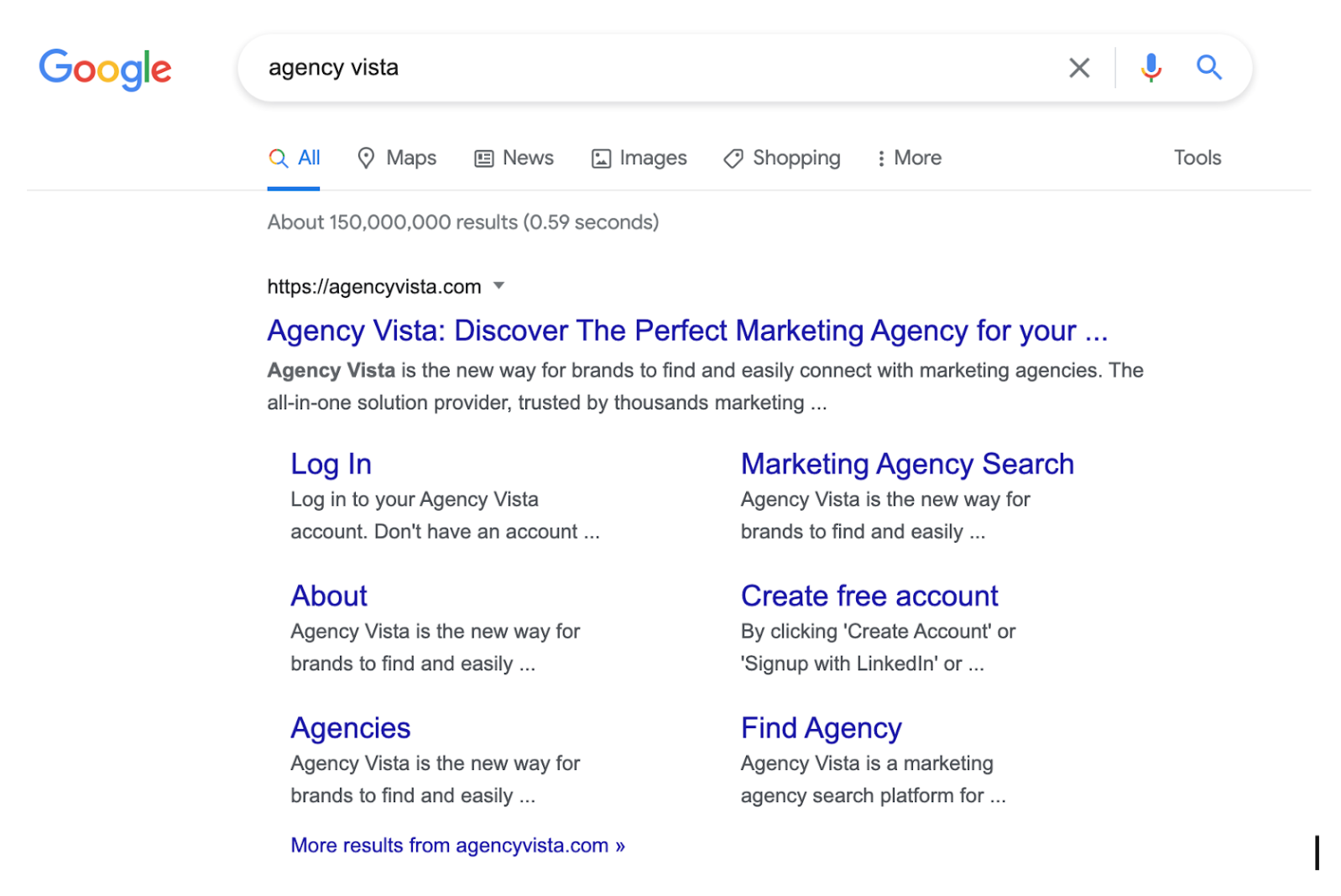August 9, 2021 - Jenna Bunnell
The Only Online Reputation Management Cheatsheet You’ll Ever Need
Online reputation management has been a hot topic in the world of marketing and PR for years. Traditional marketing methods still work. Great service. Good value. Brilliant products. Word-of-mouth. Brand recognition. They’re undeniably effective. But every single one of them has been usurped by a new method: online reputation management.
Many of today’s consumers wouldn’t drink a glass of water without Googling it to check the current trends on hydration. When it comes to subscribing to SaaS, choosing a restaurant, or buying a car, you can bet they’ll do some serious searching before handing over their hard-earned cash.
That’s why today’s businesses must take their online reputation management seriously. Here’s how to manage yours.
How to Monitor Your Online Reputation
You want to improve your reputation and influence future content. To do that, you first need to gauge your reputation.
In the long term, there are automated SaaS tools that can do this using RPA technology. Regular searches are time-consuming. Automated tools can alert you instantly or provide weekly or monthly reports. But first, conduct a manual audit of your online presence.
1. Conduct A Manual Audit of Your Online Presence
You need an accurate picture of what a prospect would see when they search you. To do this, open an incognito window. Now your SERP won’t be skewed by your browsing history. For those wondering, “what is robotic process automation” this process should feel familiar.
Simply search your company name and note the results. Ideally, your website would be top. In reality, a competitor may rank higher. That’s not a disaster – you can influence your SERP position.
Note any Google My Business links. There may also be customer and journalist reviews, socials, blogs, and articles.
Build a picture of your online reputation based on the following:
- What is the gist of the feedback?
- Are there any consistent patterns?
- How much of the content do you control?
2. Audit Your Competitors
Now you have an overview of what your prospects see. To add some context to this, audit your competitors in the same way. Continuously monitoring their output should be one of your key business processes.
How does their content compare? What about their SERP performance? What do they do well? What do they do less well? How can you stand out? This gives you a snapshot of your standing within your market.

3. Focus On Your Traffic Sources
Here’s a simple trick that reveals a great deal. Go to Google Analytics > Traffic Sources. This tells you where your traffic originates. It could be from directories, social media, Google searches, or review sites.
Sometimes quality trumps quantity. A few visits from one source might represent more value than many visits from another. But it gives you a great indicator of which media to address.
Join any relevant listing sites and directories. They often appear high in SERPs, and they’re a great way of sourcing online reviews.
4. Get Online, Even if You’re Offline
You might not have an online store or even a website. You might not go on socials. You may even pride yourself on being “offline.” The key factor here is your prospects and customers; they are very much “online.”
Kudos to you if you run a successful business based on reputation alone, but you could be missing out on customers or passing up the opportunity to expand. More importantly, feedback can help you improve.
Tips for Improving Your Solutions Through Reviews
You now have an idea of your online reputation management. But excellent communication skills aren’t enough. Be reactive by influencing the content you’re not happy about. Be proactive by using feedback to improve.
In the past, organizations spent fortunes acquiring this kind of market research. You get it for free. Use it!
Positive Reviews: Recognizing Talent
Talent often gets overlooked in families where it’s prevalent. Musical skills might go unrecognized if your dad is a concert pianist and your sister plays guitar in a band. The same is true in business. We don’t always have perspective on the things we do well.
Positive reviews are great to read, and they can highlight unexpected qualities we don’t normally shout about. So, quote them on your website, socials, and press releases. Share them with your team and thank them.

Negative Reviews: Acknowledging Failings
Not all negative reviews are constructive. Blacklist your trolls. When reviews are abusive, inaccurate, or misleading, politely request the host to remove them. Be calm and constructive. Present a point-by-point case on why the content lacks validity and reflects badly on the host as well.
Accurate negative reviews can be harder to take. Always prioritize negative feedback over positive. Surpass your average handle time. Turn them into positives. Apologize where necessary. Assure your critics that you will deal with any issues raised.
Create templates for complaint responses. Tailor them to each channel and different complaints. Make sure they are loose enough, so your output doesn’t sound generic. Store them in the cloud for easy access. Conduct an investigation. If necessary, introduce new standards and practices to prevent a repeat.
Now reach out to your critic. Explain that you made changes based on their valued feedback. Publicly or privately, invite them to use your service again. Request they amend their comments or write a new review. This is how you influence independent content.
The Ultimate Online Reputation Management Cheatsheet
Some organizations like to let their reputation grow organically. They don’t do marketing, or they’re “too busy.” That’s not very proactive, and it could see them being a lot less busy pretty soon.
Reaching out to journalists, bloggers, and influencers is like forming friendships. Take it one step at a time. Base your decisions on:
- Whom your customers listen to. Do some research. What publications do your customers read? Which influencers do they follow?
- What you can offer each other. Is this a viable partnership? Can you each offer something meaningful?
Research your prospect’s preferred communication method. Is it email or POTS line?
Search to see if any prominent figures have mentioned you. Make contact and thank them for their feedback, even if their comments weren’t 100 percent glowing. Ask if they’d like a free product or trial in exchange for a review. Be clear about what you want in return.
Form strong relationships with the right people, and watch their content climb your SERPs.
1. Customer Reviews
Encourage your customers to leave reviews. Make this as easy and accessible as possible. Have links in your email footers and a widget on your homepage. Pin a post on socials. Fill the internet with goodwill for your business!

2. Utilizing Socials
From a technical point of view, make sure you have intimate knowledge of all your channels. Learn how to design the perfect pin and compose great tweets. Tailor content to each platform.
Remember, your goal is to engage. Link to your products where appropriate, but don’t crowbar or use sales speak. The only thing you’ll be promoting is the unfollow button.
In marketing terms, provide content that has value. Special offers, how-to guides, industry insights, and personal stories. Some behind-the-scenes content or a teaser about the delivery of a new product. Answer FAQs or provide a simple warm transfer definition.
Monitor all channels, even if you don’t post on them. It’s easy to set up profile pages; then customers can @mention you.
Unhappy customers often use Twitter to leave negative feedback. It’s public-facing, so it tends to get dealt with quickly. Take advantage of this, but remember that websites and search engines often display preview snippets of your recent tweets. Post some positive content, so negative tweets aren’t all that shows up.
3. SEO and Content
You may be a blue-chip company hoping to expand or a freelancer looking to raise your rates. The fact is, Google doesn’t like adverts. Apart from Google Ads. It likes those, for some reason. Providing meaningful and engaging content is a powerful way of onboarding and climbing SERPs. It also performs three key functions:
How will your prospects find your products if they can’t find your website? Google loves neutral content with relevant links, as do customers. So, include links to partner sites in exchange for backlinks. This is a “you scratch my back, I’ll scratch yours” policy.
When that negative review drops to page two of Google, it might as well be etched in Sanskrit on the hull of the Titanic. Speed up this process by writing a positive piece on the same subject as a negative review. With good SEO, your piece should rise to the top.
4. Find Your Branded Keywords
You can use analytics to find your branded keywords. That means the words people search alongside your company name. These words can now become the anchor text for the links in your articles and blog pieces. Use them wisely.
5. Optimize Your Website
SEO is about great content but also presentation, with an emphasis on DevSecOps security. You can optimize your website, so the menu items appear under your headline on your SERPs. Not only does this give your page prominence, but it also pushes less relevant content down the results page.

6. Press Releases
Press releases can push you up the News section of Google. They’re great for posting on newsletters and socials too. Make sure your Wikipedia page is up to date and accurate. These pages usually feature highly in SERPs.
Over but Not Out
Reputations are transient. Nurturing and maintaining your online presence is a constant process, but it can be an exciting one that enriches customer engagement, improves services, and drives sales.
It works, too, so make sure you’re using it to benefit your business.
Author Bio:

Jenna Bunnell – Senior Manager, Content Marketing, Dialpad
Jenna Bunnell is the Senior Manager for Content Marketing at Dialpad, an AI-incorporated cloud-hosted unified communications system that provides call center recording for business owners and sales representatives. She is driven and passionate about communicating a brand’s design sensibility and visualizing how content can be presented in creative and comprehensive ways.
Grow with the #1 marketing agency network and top destination for businesses to hire
Sign up for Agency Vista, and see why over 50,593 marketing agencies trust us to grow their online presence and foster credible relationships with businesses. We’re free forever, and you can upgrade, downgrade, or cancel any time.
Get Started
Get started free
Setup in minutes
No credit card required

Agency Vista is the new way for brands to find and easily connect with marketing agencies. Explore 50,593 verified profiles and reviews to find the right agency for your business.
Copyright © 2025 Agency Vista LLC. All rights reserved. Lovingly made in NYC.